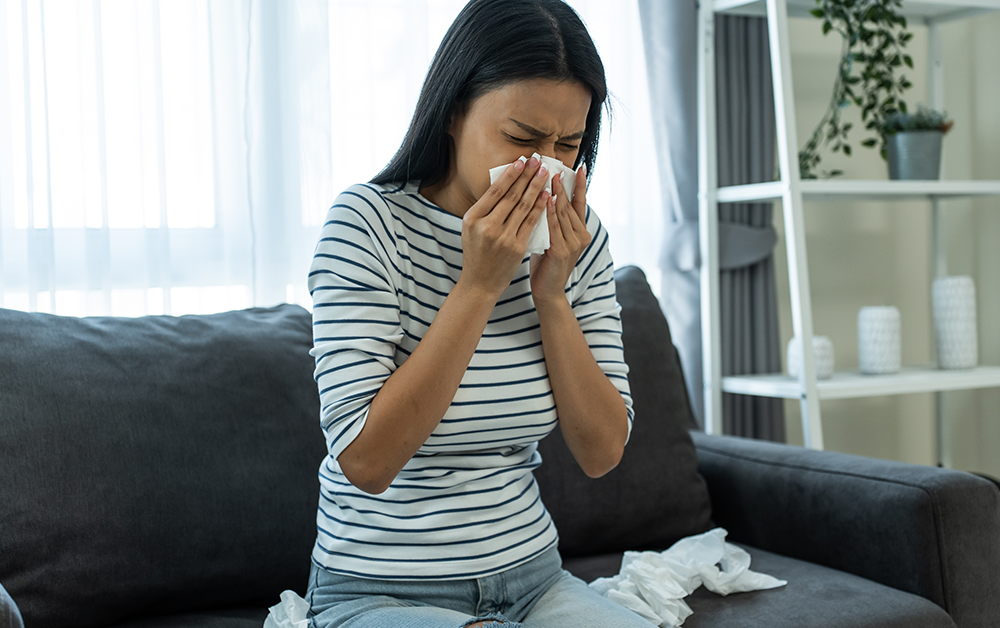
10 Ways to Reduce Allergies in Your Home
Spring is here and it brings with it a burst of energy and renewal. For many people, spring also brings sneezing, itching, runny nose, and watery eyes, due to seasonal allergens like pollen. To help you breathe easier and enjoy the spring, here are the top 10 ways to reduce allergens in your home[i].
1. Keep Windows Closed
While it may be tempting to let in the fresh spring air, it’s also allergy season. Open windows can let allergy triggers like pollen, dust and other outdoor allergens into your home. Keep windows closed during peak pollen hours which are typically in the early morning and evening. During these times, rely on your air conditioner instead to keep your home cool and comfortable.
2. Use High-Efficiency Air Filters
Upgrade your air conditioning system with high-efficiency air filters. Look for a MERV (Minimum Efficiency Reporting Value) rating of 11+ or an MPR (Micro Particulate Rating) of 1000+.[ii] These filters capture more airborne allergens, like pollen, dust, dust mites, and pet dander, and can help improve indoor air quality.
3. Clean Air Ducts and Vents
Regularly clean air ducts and vents to remove dust, pollen, and other allergens that build up over time. Consider hiring a professional duct cleaning service to ensure thorough removal of contaminants and optimize your HVAC system’s performance.
4. Create an Allergy-Free Bedroom
Allergies can make it difficult to get a good night’s sleep. To make sure you’re able to get all the rest you need, focus on creating an allergy-free sanctuary in your bedroom. Use an allergen-proof pillow covers, mattresses and box springs, wash bedding weekly in hot water. It’s important to vacuum carpets and upholstery regularly to minimize allergen exposure as well.
5. Wash Pets Frequently
Pets can track pollen and other outdoor allergens into your home on their fur and paws. Bathe pets frequently and wipe them down with a damp cloth after they’ve been outside to remove allergens before they spread throughout your home.
6. Maintain Your Yard
Weeds aren’t just an eyesore, they can contribute to allergy woes. Fight hay fever by keeping your yard tidy. Mowing the lawn frequently and removing weeds, which can release pollen into the air will help. If you know that you’re allergic to specific plants or flowers, replace them with plants that don’t impact you.
7. Use HEPA Air Purifiers
Invest in HEPA (High-Efficiency Particulate Air) purifiers to remove airborne allergens from your home. Place air purifiers in commonly used rooms, such as the living room and bedroom, to help improve indoor air quality.
8. Vacuum Regularly
One way to think about the carpet in your home is as your home’s biggest air filter. Carpet and upholstery fibers gather and collect dust and allergens. Vacuum carpets, rugs, and upholstery frequently using a vacuum cleaner equipped with a HEPA filter.
Pay special attention to high-traffic areas where dirt can gather the most. Also, pay close attention to the areas that any pets spend their time, such as pet beds and scratching posts.
9. Control Indoor Humidity
Allergens, especially dust mites, love warm humid environments. Maintain indoor humidity levels (between 30% and 50%) to discourage dust mites.[iii] Dehumidifiers are great for removing excess moisture from the air, especially in damp areas like basements and bathrooms.
10. Wash Outdoor Clothing
After spending time outdoors, remove and wash your clothes to remove pollen and other allergens that may have collected on them. Shower and wash your hair before bedtime to avoid transferring allergens to your bedding. This is even more important if you’ve been outside for long periods of time or doing yard work.
By minimizing your exposure to allergens, you can breathe easier, sleep better, and enjoy springtime without as many allergy symptoms. Incorporate these tips into your spring cleaning routine to create a healthier, happier home for you and your family.
[i] These statements are not meant as a substitute for, or alternative to information from your health care practitioner. Please consult your doctor for the most accurate information tailored to your specific health needs.
[ii] MPR vs MERV: Which is better?”, Filtrete Home Filtration Products, https://www.filtrete.com/3M/en_US/filtrete/about-us/mpr-vs-merv/
[iii] “Dust Mites”, American Lung Association, November 2, 2023, https://www.lung.org/clean-air/indoor-air/indoor-air-pollutants/dust-mites



